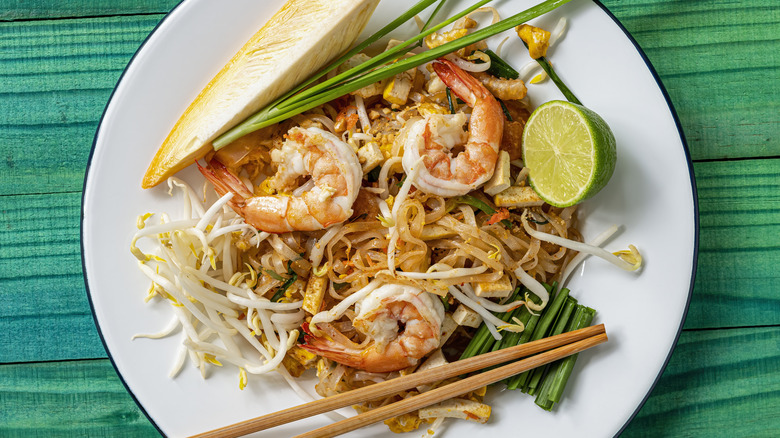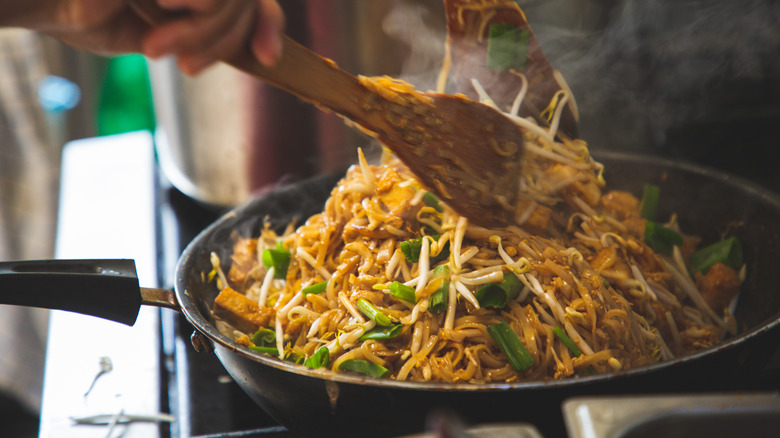The Expert-Approved Golden Ratio To Use For Pad Thai Ingredients
Pad Thai is perhaps one of the most well-known Thai dishes in the world, and for good reason; it's a delicious crowd-pleaser. If you're one of the people who thinks it's a mistake to order Thai food without adding some pad Thai to your tab, you're definitely not alone. Unfortunately, ordering out can be pricy, so maybe you've opted for a pre-made meal kit instead, or perhaps you want to try making it from scratch. Getting your homemade pad Thai to taste just right can be tricky, so to learn all about it, we spoke with Keng Kirdnimit, head chef of NYC-based Thai restaurant Soothr.
Restaurant pad Thai has two major advantages over homemade. For one, according to Kirdnimit, restaurant pad Thai is made to order and always served fresh and hot. Secondly, the chefs know the correct ratios for each of the dish's ingredients. "Getting the right ingredients and knowing how to prepare them can help home cooks to get the right taste closer to the restaurant quality," Kirdnimit told Mashed. According to him, the golden ratio is 200-250 grams of noodles for every 4 ounces of sauce and a ¼ to ⅕ ratio of protein to noodles. If you're not caught up on your arithmetic, that's approximately 40-60 grams of protein for every 200-250 grams of noodles.
Making pad Thai is all about balance
To make a delicious batch of pad Thai, you need a great base for your sauce. While there are plenty of pad Thai sauce recipes out there, Keng Kirdnimit says, "[The] best mixture should contain sugar, fish sauce, and tamarind." The first two of these ingredients offer a balance of sweetness and savory umami, while the tamarind lends a subtle sour, zesty flavor that's key to the dish. Not only does the sauce provide the bulk of your pad Thai's flavor, but it's also the basis for your two other key ingredients: noodles (specifically flat, dried rice noodles) and a protein of your choice like tofu, shrimp, beef, or chicken.
As for veggies, Kirdnimit advises that you stick to the basics, saying, "Just a small handful of bean sprouts and chives, not too many of them as noodles have to be the main ingredients you see in the dish." Basically, don't turn your pad Thai into a salad with extraneous veggies. Also, keep in mind that Chinese chives or garlic chives are likely what Kirdnimit is referring to here. If these aren't available to you, scallions are a common substitute for chives.

